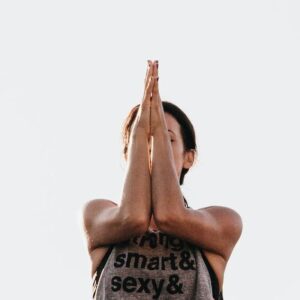Yoga is a very ancient practice for finding wholeness in practice and in life. Yoga consists of
asanas (exercises), breathing techniques and
meditations (passive and active), therefore it develops a person comprehensively – through the body, mind and emotions. Although yoga is originally a spiritual practice, in large cities spirituality takes up a small part of it. Many techniques are adapted to the tasks of the students, and the emphasis is on working with the body and breathing.
THE BENEFITS OF YOGA
Yoga helps:
- Improve concentration, develop stress resistance and skills to slow down the rhythm of life;
- Restore the emotional background, calm the psyche;
- “Renew” the body and regulate the hormonal background;
- Improve the quality of sleep;
- Strengthen physical health (strength, flexibility, balance).
Today, there are many schools, teachers and styles of yoga around the world. Some adhere to traditional teachings, while others combine new and ancient techniques, so everyone can find something different in yoga. Yoga is suitable for everyone – regardless of age, gender, religion and physical fitness. At the same time, yoga is not a sport or fitness in the usual sense. There is no need to set goals and there is no competition: this is a personal practice, even if it takes place in a group.
The frantic rhythm of life, multitasking, an excess of information – all this contributes to self-destruction, stress, tension, blocks and clamps in the body. We don’t move much, sleep poorly, eat on the go, don’t know how to relax. Yoga is a tool for self-recovery at all levels, for self-regulation and self-discipline.
YOGA FOR BEGINNERS: INSTRUCTIONS
Practice should fit into your life. To do this, you need to decide on a few things.
1) Your task is to describe the image of the result
Yoga is a deep and deep practice. Your experience will depend on your requests and expectations. In order not to be disappointed, you must immediately understand what you want and what tasks you are currently solving.
For example, if you want to add movement to your life, cheer up, tighten your body and fit into last year’s jeans, you should not go to classes with an esoteric bias, where everyone communicates in Sanskrit, sings mantras and whirls in ecstasy to connect with their “true” nature.
Decide what you want: move? To relax? Recover? Correct your posture? Learn meditation techniques? Replenish energy reserve? Prepare the body for pregnancy? Know yourself? To develop new, more stable qualities in yourself? Remove a couple of kilograms or remove the clamps in the body? Find the strength and energy to change something in yourself? Mindfulness before starting classes will help achieve the desired result.
2) Direction – choose a practice
What suits you better in terms of temperament: static (Hatha yoga) or dynamic (Vinyasa yoga)? What is closer in spirit to you: esotericism (Kundalini yoga), ancient traditions (Ashtanga-vinyasa yoga), modern young trends (Inner yoga), fitness yoga (Bikram yoga)?
What is the priority at this stage: start strengthening the body and mind (Hatha yoga, Ashtanga yoga, Vinyasa yoga), therapeutic aspect (Yoga therapy), specialized classes (classes for pregnant women, yoga for children, yoga for women)
How to prepare for a yoga class
Before class, you can drink water, but it is better not to eat for 2-3 hours.
Clothing should “breathe” and not restrict movement. It can be loose pants and a T-shirt, bodysuit or a classic fitness set: leggings and a sports top. The main thing is that you are comfortable. Yoga is practiced barefoot, but if you are cold, bring socks.
MYTHS ABOUT YOGA
Need to be flexible
The most common min among beginners. This is not true. Yoga combines exercises that develop strength, flexibility and balance. In practice, there are many nuances aimed at improving stretching. Osteopaths, orthopedists, and physicians often recommend yoga to increase spinal and joint mobility.
Need to be a vegetarian
Anyone can practice or begin the practice of yoga – a healthy lifestyle, a vegan, a vegetarian or a person who does not follow a certain diet. Those who practice yoga regularly may then adapt their diet or switch to a vegetarian diet over time.
Yoga should be practiced in sacred and deserted places
It’s not just a myth, it’s an illusion. Yoga can be practiced in any comfortable environment. The practice has long-term goals – health, constancy, regularity. This is not a one-time trip for a week, where conditions are favorable and divorced from everyday life.
Yoga is fitness for girls
Yoga is practiced by everyone – women and men, pensioners, children, people with physical disabilities. Everyone can choose activities that solve exactly his or her task, and correspond to his or her physical capabilities.
Yoga is a religion
Yoga is a philosophy and has nothing to do with religion. All schools and directions of yoga help to improve the quality of life. Yoga philosophy can broaden one’s horizons and be complementary to any religion.






